What’s Budding
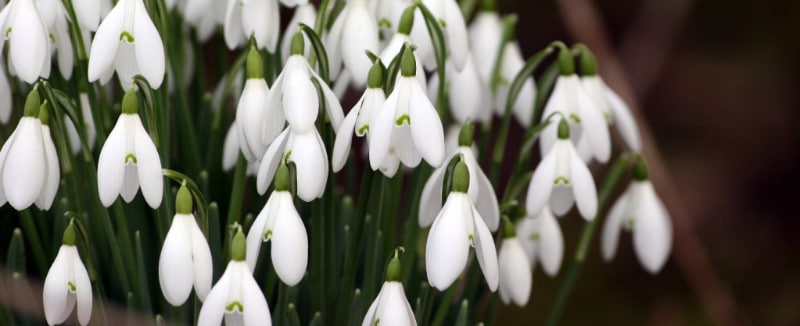
What’s Budding
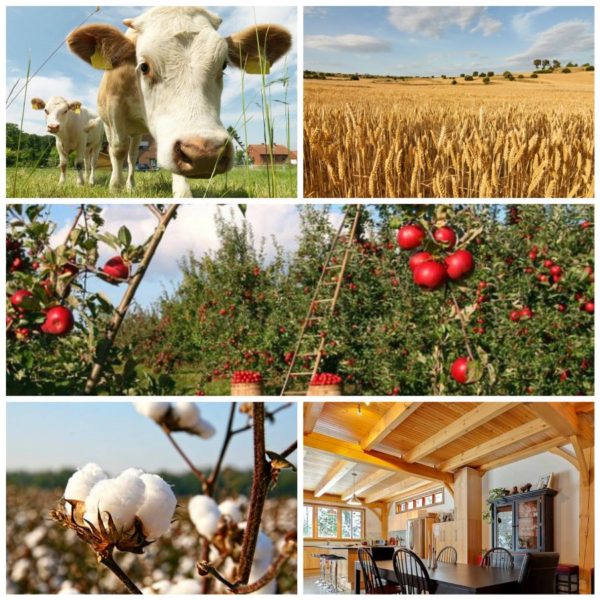
Plants and People
As a person whose entire career has been wrapped around the relationship between humans and plants, I am well aware that my perspective may not be the norm. I have always been acutely aware that plants are crucial to our lives on this planet. I grew up on a small farm and helped with the large vegetable garden my mother organized. I watched neighbor kids learn to drive tractors before they were old enough to drive cars, and care for beef and dairy cattle as part of their household chores. The food chain and how plants are the basis of everything we eat was spread out before me, from our own garden to the farms and orchards around us.
I knew as I participated in 4-H, learned about growing food and flowers, floral arranging and how to select vegetables for the 4-H Fair, that I wanted my livelihood to be plant-related. Studying Horticulture at MSU, working in the greenhouses both in the teaching and research ranges was invaluable. The relationship between plants, especially in rainforests both temperate and tropical, always fascinated me. An avid reader, continue to read and learn new garden and landscape practices. I was fortunate to be hired at The Plant Professionals, caring for interior plants, in this company’s early days.
Plants feed and house us, and they soothe, energize and sustain us- any coffee or tea drinkers reading this? Plants naturally create the very oxygen we breathe. We humans often take for granted our easy access to the benefits of plants and forget the long history of our dependance on the plants around us.
Think about what you eat. You may be a burger lover, but that burger likely is served in a bun made from wheat, featuring condiments made from plants. Even the beef itself is made possible by grass and grains that nurtured the cattle.
My ask of you is that you think about the plants that make food, fiber, medicines, and structures of wood and bamboo possible. Think about what you value and what you want to leave for the next generation. Do a little more reading and research if you have more questions than answers. Acquire a basic understanding of photosynthesis, the role of forests in climate moderation and climate change, and how our farming practices impact our water quality.
We are all active participants in the use of resources, and we each can actively participate in using our finite resources wisely. Plants don’t need us, strictly speaking, but we surely need them.

On the Green Side
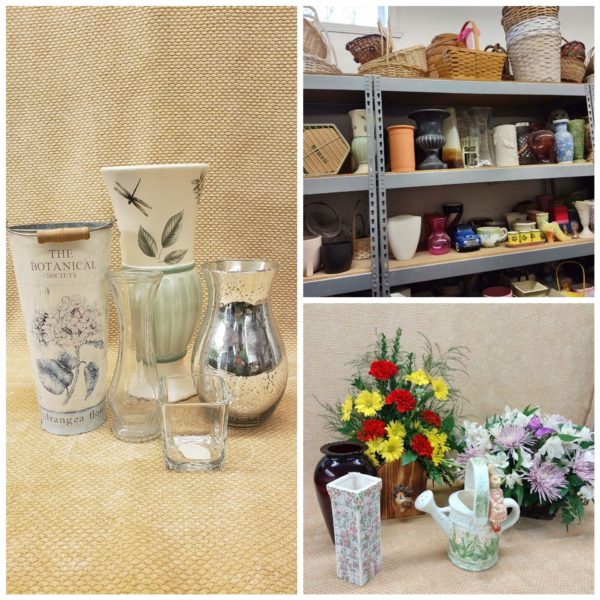
Vase Chase
One of the things I love about being an independent florist rather than belonging to a marketing company for floral is the freedom to use floral designs and vases of our choosing. The national marketing campaigns feature some lovely designs and vases, but the programs require the florist to buy cases of each vase and large quantities of the proscribed flowers at each featured holiday. Overbuy, and the florist is stuck with vases that will never be featured again. Underbuy, and the florist will run out, causing substitutions that often lead to customer disappointment.
There are three entities in the marketing process: the sending florist who takes the order and passes it to the marketing hub- that marketing company, and the receiving florist who gets the order to fulfill and deliver. The sending florist gets a small set amount, the marketing company gets a set amount, and the florist who designs and delivers gets a set amount. The problem, besides the design limitations, is that if flower prices go up, if labor is more expensive, when fuel prices are high, that florist who is delivering has to absorb it all, and the only way to decrease costs is to make the arrangement smaller or use fewer flowers. If flowers fail early, or the sending customer or receiving customer are disappointed, that florist is the one who must make it right. This creates a system where every florist would rather take orders for out of town or take local delivery orders, but they would rather minimize having to fill orders from out of town.
We do a smaller order volume than a design house working with one or more marketing companies, so each order gets a personal designer touch, and our ability to source fresh, well-hydrated flowers is much higher. Rather than having a half dozen featured vases for Mother’s Day, we have over 100 choices. We have large, small, tall, wide, round, square, oval, glass, metal, ceramic, plastic, wood or wicker (with liners) and fiberglass, clear, colors and patterns.
Whatever style and color you are looking for, we can likely find a look you will be proud to send and your recipient will be pleased to receive. Do you have empty vases clogging your cupboard or that basement shelf from years of receiving gifts? We are happy to take them and sanitize them for reuse as long as the vases are not cracked, chipped or otherwise damaged.
As always, for events where multiple matching pieces are needed, we have both rental pieces and vases for purchase. We are glad to order anything we don’t have with needed lead time. Call and ask for Deb to discuss your next project or floral gift.
Digging In
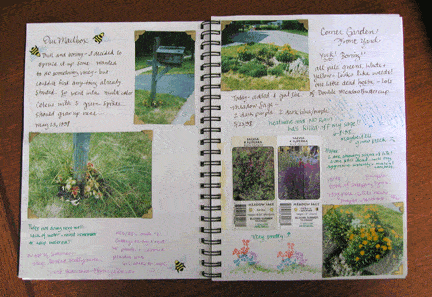
Garden Record Keeping
The practice of keeping records of your gardens throughout the seasons has become easier with all the commercially prepared garden journals available to purchase online, in book stores, and in many garden centers.
A three-ring binder, spiral notebook, composition book, or a blank calendar are also great for referring to year to year. There are many advantages to keeping records and it’s an easy way to becoming a better gardener. You will make smarter plant choices when purchasing plants, timing garden chores such as applying a preemergent to prevent spring or fall germinating weeds. A journal also helps you to calculate harvest dates, and you will start noticing natural patterns over time.
If carrying around a binder, or journal for your records isn’t appealing, there are some free online apps and some that charge a fee. Planter- Garden Planner for Veggie Gardens, Garden- Organizer: Manager and Planner, and Garden Tags- Plants and Gardens are a few examples of the many apps offered.
When you develop the habit of observation in the garden, upkeep is more manageable, expenses are reduced, and it will assist you in developing beautiful gardens and a bountiful harvest.
Spring is the perfect time to start keeping your records while you get ready for the growing season. It is important to know your plant hardiness zones and your spring frost free date. I suggest placing that information first in your journal. Next, a sketch of your existing gardens is very useful to know where plants are located, to plan for future plantings, and to determine the size and amount of what can be planted in your space.
Some perennials such as hardy hibiscus and baptisia are late to make their appearance in the spring, and it’s easy for a gardener to chop through them by accident as they are eager to clean up their gardens or plant new perennials after a long winter. I have some personal experience with this, unfortunately!
Consider breaking your records up by sections: seeds, plants, bulbs, logs, expenses and receipts, calendar and maintenance.
In the seeds section, make a list of the seeds you want to try, the date to start inside or outside, and other information you want to know about the plant such as bloom, or harvest time. Pockets that can be added to a binder can be handy to hold the seed packets, or glue them opened, onto a page for reference.
In the plant section, list the plants that you have, bloom time, plants you want to add, and where you want to add them. This helps when you are at the garden center, and there is a sale on plants calling out to you. If you know your plans for adding plants, it helps you to decide if you should buy them, or walk away.
Record where you plant your bulbs. Since they are not visible and above ground most of the year, they are easy to lose track of.
The log section is where you can record what is going on in the garden. What is the weather doing? Are we in a drought or have excessive rainfall? Did compost or fertilizer get applied? When, what, and how much? What was the temperature like at certain times of the year? When did the pests show up, on what, and how were they treated? This information helps you recognize patterns over the years, and do prevention planning at the outset of the growing season.
By keeping a list of expenses and receipts, it helps to budget for new tools, amendments, mulch, seeds, plants, etc. It also may help you to determine if you are saving money by growing your own produce. A pocket or envelope glued in here is useful for holding receipts. Many garden centers offer plant guarantees, but you need to bring back the receipt if the plant does not make it, to be replaced under warranty.
Calendar pages in your records can help you to calculate dates that your seeds need to be started indoors for proper planting time in the spring, as well as expected harvest dates.
The maintenance section can include when you weeded, how much watering was needed, and what pesticide was needed.
The Buzz
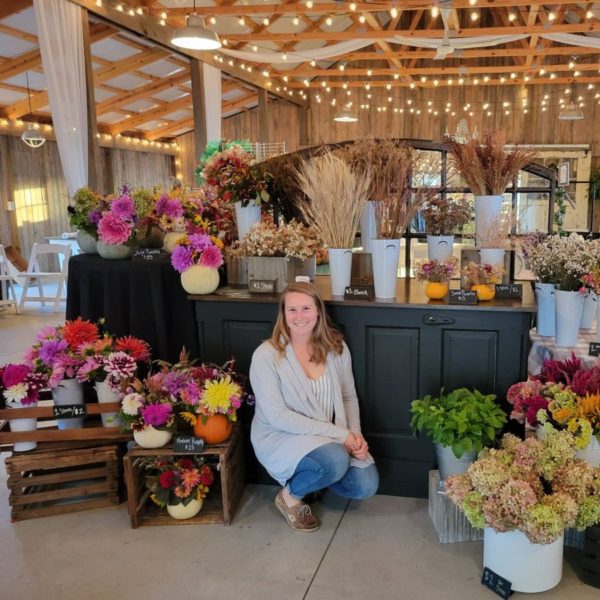
Meet Erika Parker
If you are a client of ours with outdoor color plantings, or have a landscape we provide bed maintenance services for, you have encountered the professional touch of Erika Parker. Erika not only orders and tags all the color planting materials, she schedules their installation and care. Likewise, with landscape maintenance, she makes sure our customers receive prompt, professional care. This means she helps hire, train and equip our exterior staff to be of good service to our customers throughout the season. She teaches skills and customer service as well as the accurate recording of data.
Erika is adept with databases, seeing needs, developing solutions, recording time spent and materials used. This improves our accuracy at time of each quote and helps us with continual improvement. Erika manages her time and crew time to provide excellent service as we battle weather, weeds, insects and deer throughout the growing season. As our crews are cross-trained for all our various services, Erika is adept at everything from holiday decorating to floral. She understands the many factors that impact scheduling and execution. This helps her send the right people for the tasks at hand, and working with Al and Jaimer, she makes sure it all gets done.
Growing up in the metro Detroit area, Erika didn’t have many opportunities to explore outdoor pursuits or horticulture, but her interest was strong. While pursuing her degree in Natural Resources, Recreation and Tourism, at Michigan State University, she had the opportunity to volunteer at the MSU Horticulture Organic Farm. As her interest in agriculture grew, she pursued work in MSU Extension services, Michigan State Parks, and Kensington Metroparks. While working at Kensington she loved working with both plants and animals. In the winters, Erika ran sled dogs in the Upper Peninsula.
Her passion for plants and flowers has led to her own flower production farm in Laingsburg, Roots N’ Blooms. With a little help from her husband Taylor, she plans, produces, harvests, and sells specialty cut flowers, making bouquets to sell from her roadside stand as well as taking her newly refurbished design trailer on the road for farm markets and events. Follow Roots N’ Blooms on Facebook for more information and her market schedule.